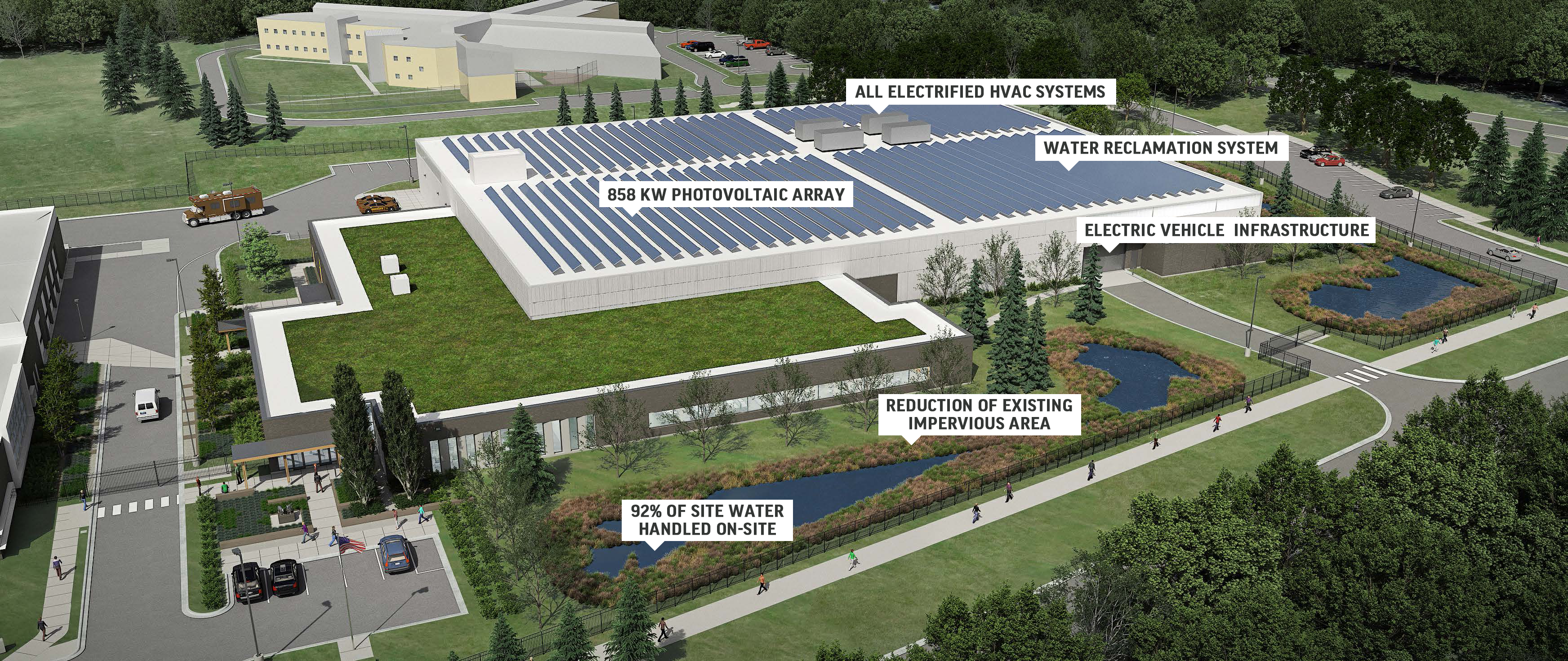Sustainability has become a cornerstone of architectural and construction practices. Stahl embodies this by integrating environmentally responsible construction methods, partnering with innovative design teams, and utilizing sustainable materials in our projects. Our commitment to sustainability is evident not only in the structures we build but also in the processes we employ. A recent standout project that demonstrates this is the Hennepin County Public Safety Service Center.
High Performing Design
In 2020, Hennepin County initiated its Climate Action Plan to reduce greenhouse gas emissions and enhance climate adaptation with a focus on equity and resilience. The first project under this vision is the Public Safety Service Center, a 100,000 SF facility set to be the first Hennepin County facility designed to surpass Net Zero. This 24/7/365 facility supports various law enforcement functions, including communications, a mobile office for patrol staff, and 75,000 SF of heated vehicle parking.
Traditional design standards would have led to higher energy consumption of around 70 EUI (Energy Use Intensity), but LEO A DALY integrated advanced energy strategies to meet efficiency and environmental goals, achieving an EUI of -3. Notable features include bi-facial solar panels, which capture sunlight from both sides and will generate over 1,000,000 kWh of clean energy annually, and a Darcy Well geothermal system for efficient heating and cooling to a constant 55-degree underground water temperature year-round through only two boreholes, minimizing site disruption.
Additionally, the new facility includes exterior and interior electric vehicle stations, carbon emission reduction through electrification, native plants and tree conservation to limit gas use, a green roof for water management and a stormwater reclamation system.

Sustainable Construction Practices
Integrating sustainable practices into every phase of the construction process, we utilized environmentally friendly materials, implemented energy-efficient technologies, and adopted green building certifications—prioritizing sustainability as a core project principle.
Responsible material selections included locally sourced aggregate and wood for the building structure and all low-VOC finishes plus some biobased, recycled content selected for the interiors.
Another notable aspect of this project is the partnership with Better Futures Minnesota, a non-profit company working with high-risk adults. To make space for the new Public Safety Service Center, a building on-site needed to be deconstructed. This process involved carefully taking apart the building to recover reusable materials, requiring specialized skills and equipment to ensure the safe removal of materials without causing damage.
The materials salvaged by Better Futures Minnesota are sold in its ReUse Warehouse, diverting 700 tons of building materials a year from area landfills, including 33 tons from the Public Safety Service Center project. This innovative approach not only supports sustainability but also empowers the community.
The new Public Safety Service Center is a testament to sustainability, efficiency, and inclusivity. It highlights innovative energy solutions, wellness strategies, and responsible material selections, setting a new standard for public safety buildings.
